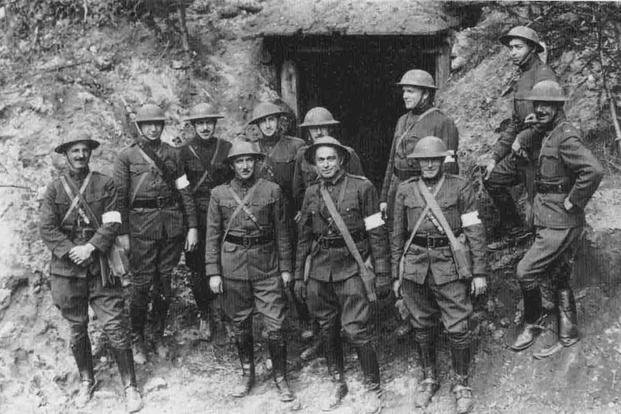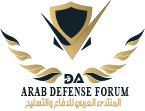The Army has pushed back on a study purporting to show that World War I "tinpot" helmets were just as good or, in some cases, better than the service's current Advanced Combat Helmet in mitigating the shock wave effects of blasts that can cause traumatic brain injury (TBI).
"Our current helmets are much better," the Army's Dr. Christopher Hoppel said Tuesday in questioning a study released earlier this monthby Duke University's Pratt School of Engineering, which gave surprising results for the French Army's WWI "Adrian" helmet.
Hoppel and other researchers at the Combat Capabilities Development Command's Army Research Laboratory said the Army's Advanced Combat Helmet (ACH) and the Marines' Enhanced Combat Helmet (ECH) offer far superior overall protection than the helmets worn by U.S., French, British and German troops during WWI.
The "Brodie" helmet worn by U.S. and British troops in WWI, the French Adrian and the German Stahlhelm "pale in comparison" to the versions sported by today's troops, said Rob DiLalla, the Army's team leader for Ballistic and Blast Protection.
The ACH and ECH are "the best engineered systems that you'll find anywhere in the world today," DiLalla said.
The Duke study found that the Adrian helmet resulted in lower crown pressures than the ACH, Brodie and Stahlhelm in testing for shock wave effects from an artillery blast directly overhead.
The Adrian had an unusual crest along its crown. "This feature of the helmet could deflect the shock wave off to the side of the head," the study states.
"The results found here suggest that the ACH did not perform quantitatively or qualitatively better than the historical helmets and performed worse than the Adrian helmet for overhead primary blast at the crown of the head," the Duke engineers found.
"While we found that all helmets provided a substantial amount of protection against blast, we were surprised to find that the 100-year-old helmets performed just as well as modern ones," said Joost Op 't Eynde, a biomedical engineering Ph.D. student at Duke and first author of the study.
"Indeed, some historical helmets performed better in some respects," he said in a Duke release. "This study is, to the best of our knowledge, the first to assess the protective capabilities of these historical combat helmets against blasts."
But the Army researchers had several problems with the testing.
The Duke study measured the shock wave effects only from blasts directly overhead to the crown and failed to take into account shock waves coming from the sides or underneath the helmet, the Army researchers said.
"I wouldn't go as far as to say it reduced concussive effects," Hoppel said of the Duke findings on the Adrian helmet. "It reduced the pressure in one specific loading condition -- a blast coming from the top of the helmet. I recognize that from other angles it would be much worse for pressure."
DiLalla agreed. "I think the [Duke] study was extremely limited based on the fact that they looked at just one loading condition, particularly just the crown. You have to look at the frontal loading, the side loading," he said.
The Duke study states, "The helmets were tested with shock waves of varying strength, each corresponding to a different type of German artillery shell exploding from a distance of one to five meters away."
That was a fatal flaw in the study, according to DiLalla. Five meters is well within the "kill radius" of artillery rounds, and TBI would be the least of the concerns for troops subjected to it, he added.
"Inside five meters is well inside the kill range of that artillery shell," DiLalla said. "It's not even in range where the protective equipment could actually do something."
Hoppel, DiLalla and Mike Maffeo, a member of DiLalla's ballistics team, said that comparing helmets for their ability to protect against the shock wave effects of artillery blasts is, in a sense, comparing apples and oranges.
The ACH "doesn't have a requirement" for protection against shock waves, but was primarily designed for protection against blunt force from shrapnel and debris churned up by blasts, Hoppel said.
However, after years of work and design, the Army has come up with a test method for measuring helmets' ability to protect against shock waves, the Army researchers said.
"This has been debated for many years -- how to get the correct pressure profile," Maffeo said.
The Army now has what he called a "large advanced shock tube. We have a test device that replicates the free field blast environment."
"We're working with the test community now to coordinate blast testing," he added.
The pluses and minuses always have to be weighed in coming up with a better helmet, or any other form of soldier protection, Hoppel said.
"When it comes to improving the current helmet technology, we have to consider performance versus protection," DiLalla added.
"It would be great if we could put every soldier in a tank" to maximize protection, he explained. "And if he has to dismount, well, put him in a bomb suit. But we understand there's a trade-off" in soldier performance.
Hoppel pointed to the difficulty of giving troops' unguarded faces some measure of protection against the concussive effects of shock waves.
"There is a face shield available," he said. "We've done a lot of research on different types of protection" for the face.
But there is a trade-off that comes with limited vision and adding yet another device for already overburdened soldiers to deal with, he added.
The issue of shock wave effects and TBI came to the forefront after the Jan. 8 Iranian ballistic missile attack on Iraq's Al Asad Air Base in retaliation for the U.S. drone strike that killed Iranian Quds Force leader Qasem Soleimani on Jan. 3.
Joint Chiefs Chairman Gen. Mark Milley told reporters at the Pentagon on the night of the Al Asad attacks that he believed the Iranian missiles carried 1,000- to 2,000-pound warheads. Initial reports the next day from the military and President Donald Trump said there were no U.S. casualties.
In the following days, however, the Defense Department began reporting that some U.S. troops at the base had suffered mild traumatic brain injuries. Some were sent to Germany for observation and others to the U.S., but most had returned to duty, the DoD said.
By last week, the number of troops who had suffered TBI had climbed to at least 110. At a Pentagon briefing Monday, Air Force Brig. Gen. Paul Friedrichs, the Joint Staff surgeon, said the initial reporting on the TBI injuries had been sketchy "because the signs sometimes are fairly non-specific."
"If you're 18, 19 or 20 years old, even though we've trained everybody who deploys downrange on what to look for, it's quite common that we'll have folks who will say, 'I just was blasted. Of course, I'm not going to feel quite right. I'm just going to ride this out for a couple of days,'" he said. "And then they come in, several days or weeks after the fact."
The researchers at the Army Research Laboratory said it is impossible to determine whether helmets might have prevented or limited the cases of TBI at Al Asad.
It is unknown how many of the troops who reported TBI were wearing helmets, DiLalla said.
He added that it's also unknown how close troops were to the blasts and whether they were in bunkers or above ground.
"It's very hard to answer that question," DiLalla said.

Were WWI 'Tinpot' Helmets Really Better at Preventing TBI? The Army Says No
A study claiming a French World War I helmet was better at mitigating TBI got it wrong, according to the Army.
